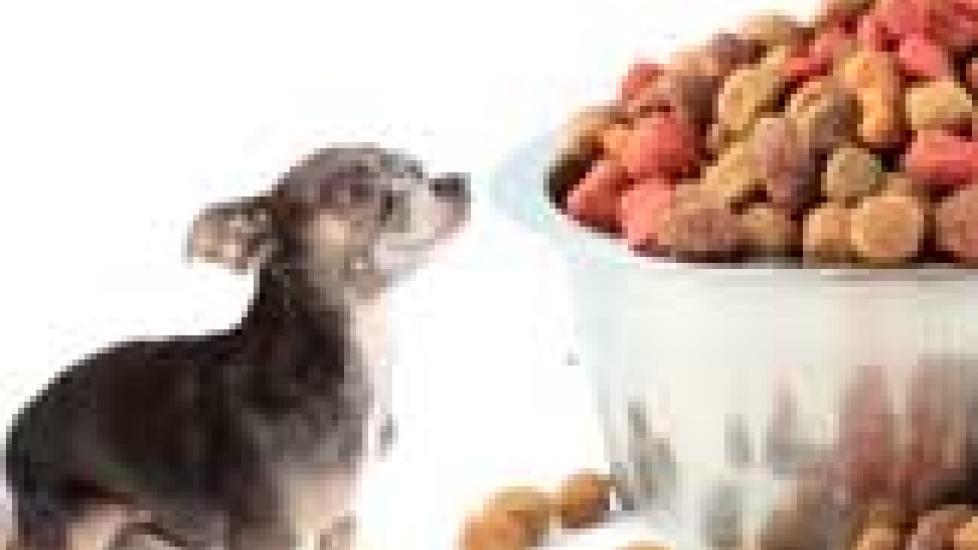It's Official: Size Matters
It has long been known in human weight research that the size of food bowls, plates, and utensils influence the amount of food served and consumed. These effects are believed to be the result of two famous psychological concepts, the Delboeuf optical illusion and the Ebbinghaus-Titchener size-contrast illusion. It is the logic behind serving dieters their meals on saucers instead of plates and reducing the size of serving utensils.
Research with dog owners has suggested that the size of food bowls and food scooping devices might be a significant contributor to the pet obesity problem. A recent study confirmed that, indeed, the size of food bowls and serving utensils influence the meal size owners feed to their pets.
The Study
Fifty-four dogs and their owners were randomly chosen for the study. Each owner with his or her dog visited the research facility four times for normal feedings of kibbled dog food — using four different feeding utensil combinations. Owners fed with a small scoop and small bowl, a large scoop and small bowl, a small scoop and large bowl and a large scoop and large bowl. No combination was used more than one time for each pet owner.
Statistical analysis confirmed that meal sizes were consistently smaller when owners used a small scoop and small bowl, and consistently larger when the large scoop and large bowl were used. Food amounts did not vary significantly between the large scoop/small bowl and the small scoop/ large bowl treatments. The researchers concluded that the same optical and size-contrast illusions that affect our own portion control are at play when we feed our pets.
Pet Store Behavior
The study seems obvious and common sense would conclude it probably wasn’t necessary. But apparently this concept isn’t that obvious. When I question pet owners about food bowl size or watch shoppers at pet stores, I encounter a consistent behavior: Owners always choose a food bowl much larger than necessary for the size of their pet, with large breeds given enormous containers. A correctly portioned meal looks miniscule (those optical and size-contrast illusions) in a large bowl and hence the tendency to "top off."
Since so few owners use a "true" measuring cup as a scoop (I have never seen feeding instructions on a bag that used the word scoop instead of "8 oz. measuring cup"), our pets are consistently receiving more food than they need. I won’t even get into the calories from treats. Interestingly, the same owners purchase or use a much smaller water bowl than food bowl. Water, the most important nutrient, gets the smallest container! Again, this is just another psychological indicator of our fixation on food.
The Solution
As I have mentioned in other blogs, the food bowl should only be as large as necessary for a pet’s snout to comfortably lick or grab the food. No dog, not even a Mastiff, needs a 9 inch diameter food bowl. Chihuahuas, toy poodles, and cats need little more than a food bowl the size of a tiny dessert parfait cup. And the water bowl should dwarf the food bowl by 2-4 times.
An 8 oz. measuring cup should be the only utensil used as a scoop. Weighing the meal on a kitchen gram scale would even be more accurate and give more consistent meal sizes.
And always remember to follow feeding instructions of the new food when you change pet foods. Foods vary enough in calorie content that feeding a new food in the same amount as the old could be adding too many calories to your pet’s diet.

Dr. Ken Tudor
Image: Graça Victoria / via Shutterstock
